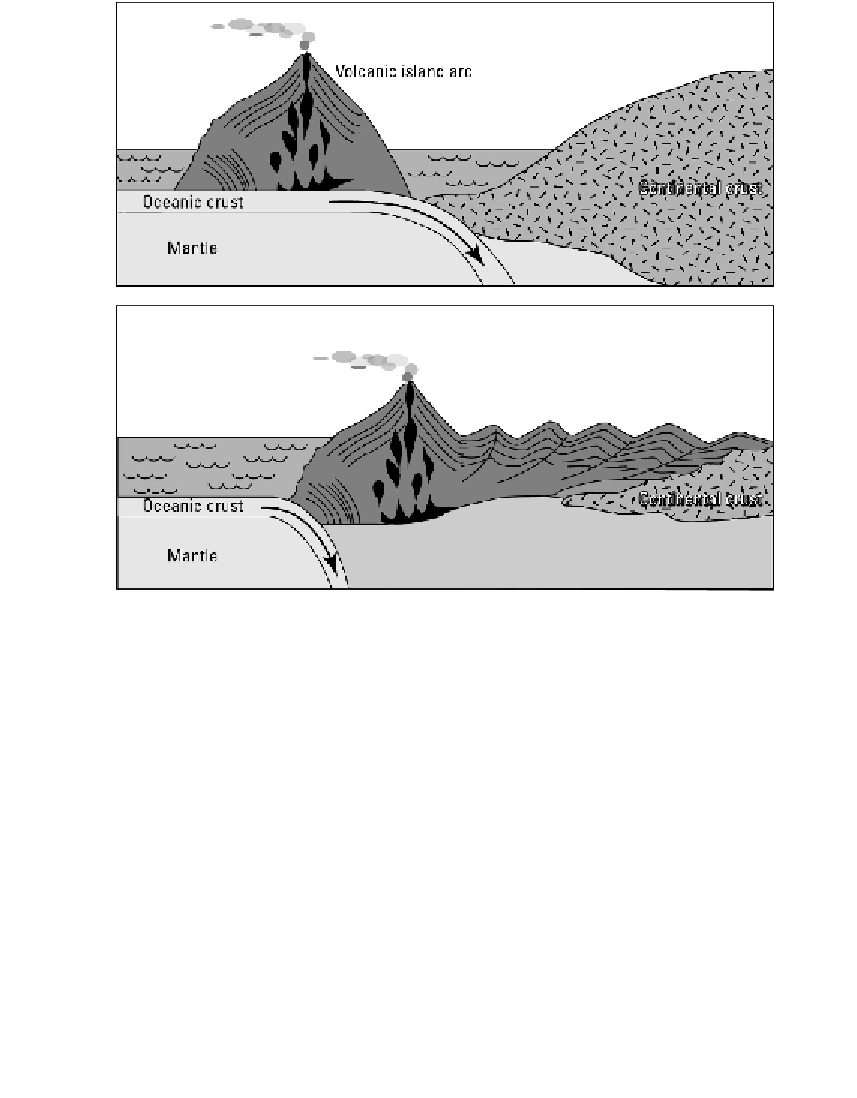Geology Reference
In-Depth Information
Stretching and thinning
In regions where the crust is uplifted by hot magma, such as along the mid-ocean diver-
gent boundaries, the tension stress and resulting faults create
fault-block mountains.
An
example of fault-block mountains formed long ago is the basin and range province of
Nevada in North America. In this region, the crust has been lifted and stretched, tearing
the rocks apart in such a way that large blocks of rock called
grabens
drop down
between raised blocks of rock called
horsts,
creating a series of parallel mountain ridges.
Crushing and lifting
More common than fault-block mountains are
fold-thrust mountains,
which occur at con-
vergent boundaries where two plates of continental crust crash together. The compres-
sion force of the two plates moving toward each other folds the rock layers, deforming
them and thrusting them upward, creating mountains such as the Himalayas or the Alps.
In fact, this orogenic process occurs today as India is pushed farther up toward Asia,
continuing to uplift and build the Himalayan mountain system.

